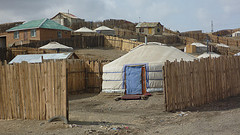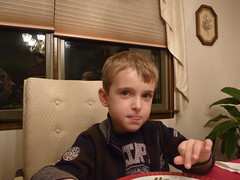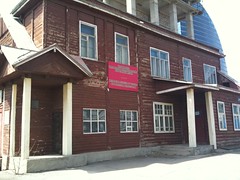After 36 followed by 25 hours on the Trans-Siberian train last month, flying 12 hours to Tokyo was a walk in the park. A walk in the park followed by a long nap where you wake up in a mecca of neon lights and video-game-style pre-recorded voices.
 Wandering the streets of Ikebukuro, Shinjuku, Akihabara and beyond, I’m observing a culture and a city that for my entire adult life people have been explaining or trying to describe to me. Yet of course it is one thing to be told about Japan and this crazy capital, yet it is entirely something else to experience it first hand.
Wandering the streets of Ikebukuro, Shinjuku, Akihabara and beyond, I’m observing a culture and a city that for my entire adult life people have been explaining or trying to describe to me. Yet of course it is one thing to be told about Japan and this crazy capital, yet it is entirely something else to experience it first hand.
This type of writing isn’t unique because it is found on this blog; throughout the internet, intrepid and less-intrepid travelers have been musing about Japan for as long as there has been a WWW. Before that they stuck to tv documentaries, films, novels, and I’m sure many a pamphlet.
Still, my Japanese experience is most unique in that it is shaped by all of you. You being the twitter people, the facebookers, the comment leavers, the online and offline friends. Through your recommendations, your photo-memories, and your in-person meetups, in what is a short visit to such a culture and adventure rich nation, I manage to learn and soak in more than I would have otherwise; on my own, with a guidebook.
Many would say, I’m curious to travel to Japan and far away places like that, but I would feel lost or intimidated by things I don’t understand. But the online-offline communities I have the good fortune of being a part of – the hackers, the journalists, the podcasters videobloggers, the couch surfers, the frisbee players – they all ensure that no matter what, I’m never truly traveling on my own, unless I want to.
I hear the lamenters. Those who say – ah but traveling on your own is rewarding too. Discovering things for yourself is important. I hear them and I keep this in mind as I do indeed take the time or the effort to discover things for myself. However when I turn a corner that I would not have otherwise turned, because someone walking next to me or following me on twitter recommend I do so, and I find myself somewhere magical, those fears about how things are changing, don’t seem so important.
 Greetings once again from the neon streets of Tokyo. The TBLI conference is in full swing here and that means yours truely is working hard to make sure technology works during this two day event. Therefore I shall interrupt the serious citizen journalism with a little interlude worthy of the worst and most distracting entertainment websites on the internet today. Yes as of this post, I too am guilty of promoting cat humor.
Greetings once again from the neon streets of Tokyo. The TBLI conference is in full swing here and that means yours truely is working hard to make sure technology works during this two day event. Therefore I shall interrupt the serious citizen journalism with a little interlude worthy of the worst and most distracting entertainment websites on the internet today. Yes as of this post, I too am guilty of promoting cat humor. Wandering the streets of Ikebukuro, Shinjuku, Akihabara and beyond, I’m observing a culture and a city that for my entire adult life people have been explaining or trying to describe to me. Yet of course it is one thing to be told about Japan and this crazy capital, yet it is entirely something else to experience it first hand.
Wandering the streets of Ikebukuro, Shinjuku, Akihabara and beyond, I’m observing a culture and a city that for my entire adult life people have been explaining or trying to describe to me. Yet of course it is one thing to be told about Japan and this crazy capital, yet it is entirely something else to experience it first hand.
 During my brief time in UlaanBaatar, I was recommended a contact person, Susan Griffeth, who had founded an organization working in the Ger (Yurt) district almost 10 years ago. Susan was kind enough to pick me up one afternoon and take me to the district and for a visit to her organization, Flourishing Future, to learn about all the community development and assistance activities they were involved in . From there another member of the
During my brief time in UlaanBaatar, I was recommended a contact person, Susan Griffeth, who had founded an organization working in the Ger (Yurt) district almost 10 years ago. Susan was kind enough to pick me up one afternoon and take me to the district and for a visit to her organization, Flourishing Future, to learn about all the community development and assistance activities they were involved in . From there another member of the A recent edition of
A recent edition of  This website has existed in different forms since 2001. In that time, alot of people have come and gone, regular readers, occasional visitors, frequent comment leavers. For those that remember the days when the title of the site was “The Communique” and my focus was on more than under-reported news but also life in Holland, family, friends and internet culture in general, then you’ll surely remember when my nephew A-Ren was born. Its hard to believe 6 years have gone by. To this day when I travel, when I run into friends or aquaintences that know my site, people still ask me “How’s A-Ren?” Naturally I always smile and say He is GREAT!
This website has existed in different forms since 2001. In that time, alot of people have come and gone, regular readers, occasional visitors, frequent comment leavers. For those that remember the days when the title of the site was “The Communique” and my focus was on more than under-reported news but also life in Holland, family, friends and internet culture in general, then you’ll surely remember when my nephew A-Ren was born. Its hard to believe 6 years have gone by. To this day when I travel, when I run into friends or aquaintences that know my site, people still ask me “How’s A-Ren?” Naturally I always smile and say He is GREAT!
 Within ten minutes of sitting down at a table together, Bekhbat and I immediately were immersed in a conversation about Mongolian history. Me, the student, and he – the teacher, Director of the
Within ten minutes of sitting down at a table together, Bekhbat and I immediately were immersed in a conversation about Mongolian history. Me, the student, and he – the teacher, Director of the